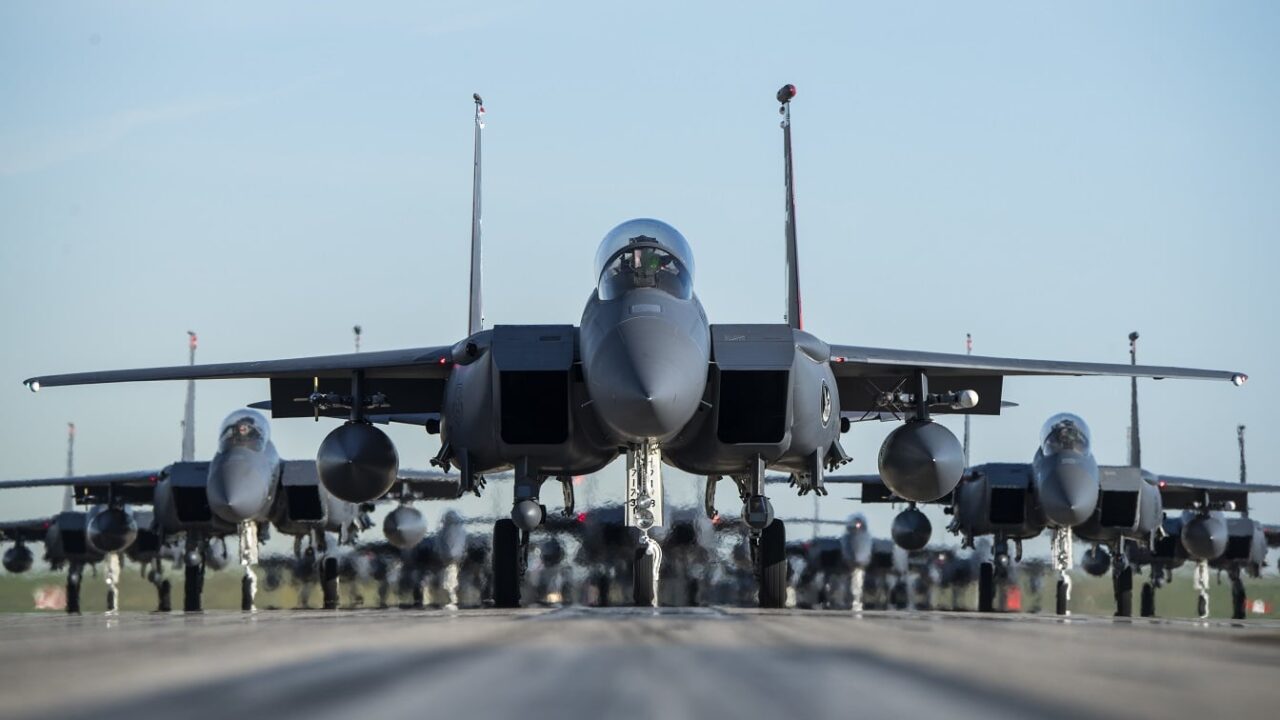Older F-15 Model Getting Phased Out in Asia? The U.S. Air Force is sending home two key squadrons of F-15C/D fighters that protect Okinawa. The re-deployment will happen over the next two years. Instead of a permanent basing of F-15C/Ds, more sophisticated fighters will eventually replace the older warplanes on a rotating basis. F-22s based in Alaska will likely become the go-to fighter in the Japan area of operations. This is a “phased withdrawal” of the Strike Eagles from the 18th Wing at Kadena Air Base in Okinawa, considered a highly strategic installation for Indo-Pacific defense against China.

Image: Creative Commons.
Watch Out for New Chinese Fighters
This has some critics wondering if the United States has de-emphasized the protection of Japan in an age where China is developing more stealth fighters such as the J-20 Mighty Dragon.
Critics Are Worried
David Deptula, former vice commander of Pacific Air Forces and a retired F-15 pilot, said it will send a message to China that the United States lacks fortitude in supporting its allies and that will leave the door open to China “taking dramatic action.”
Time for Modernization of the Fighter Fleet in Okinawa
But Air Force messaging on the redeployment denies that is the case and a public affairs official said it was time for the aging F-15s to be replaced in 2023. Spokeswoman Ann Stefanek said the move actually helps the Japanese alliance. The F-15s have been in service for 30 years, she explained, and the Air Force needs some new blood with more modern stealth fighters superior to the F-15 in the mix.
There Are Older F-16s in Japan Too
New deployments will last around six months before they rotate. The Air Force also has F-16s at Misawa Air Base in northeastern Honshu, the largest of Japan’s four main islands.
Could It Save Money in the Long Run?
This could be a cost-cutting move as well since permanent basing requires the Air Force to pay for families of pilots. The six month rotations of the two fighter squadrons on Okinawa will not be permanent change of station moves or long-lasting tours that would include aviators’ dependents to stay at the base.
Which Airplanes Could Rotate In?
In addition to F-22 temporary rotations, the Air Force could choose to deploy the revamped F-15EX that are initially going to Air National Guard units. F-35s could also be part of the rotation.
Lacking Resolve?
China has shown for years that it is beefing up its air force and naval presence in the Taiwan Strait and South and East China Sea. Beijing may look at the F-15 departure from Okinawa as a lack of resolve from the United States and Japan. Every military move in East Asia is taking on heightened significance these days.
National Defense Strategy Calls for a Modernization of the Japanese Alliance
The Department of Defense has just released its National Defense Strategy and the document declares that the long-term threat to American interests will be coming from Beijing in the future. The strategy outlines a concept called “integrated deterrence” in which the United States engages in a whole of government effort to bring in multiple defense and intelligence stakeholders to maintain an advantage over the enemy.
The strategy also said it would “modernize our alliance with Japan.” This is an interesting phrase and shows that the F-15 re-deployment has been thought out in advance of the document’s release. Modernization would mean replacing legacy systems with newer military hardware. If that’s the case, then the F-16s in Japan could also be phased out in the coming years.
Make Sure All Assets Are Covered
The F-15s in Okinawa are aging, and it is time for a replacement. The Air Force should just make sure there are enough F-22s and F-35s to cover all the geographical areas necessary for deterrence. For example, if the new deployments would come from squadrons in Alaska there would be fewer fighters to address Russian flights that enter the Alaska air defense identification zone. Hopefully, Air Force planners are aware of these challenges and will ensure that Okinawa and Japan are completely backstopped by the might of the U.S. military.
Expert Biography: Serving as 1945’s Defense and National Security Editor, Dr. Brent M. Eastwood is the author of Humans, Machines, and Data: Future Trends in Warfare. He is an Emerging Threats expert and former U.S. Army Infantry officer. You can follow him on Twitter @BMEastwood. He holds a Ph.D. in Political Science and Foreign Policy/ International Relations.

